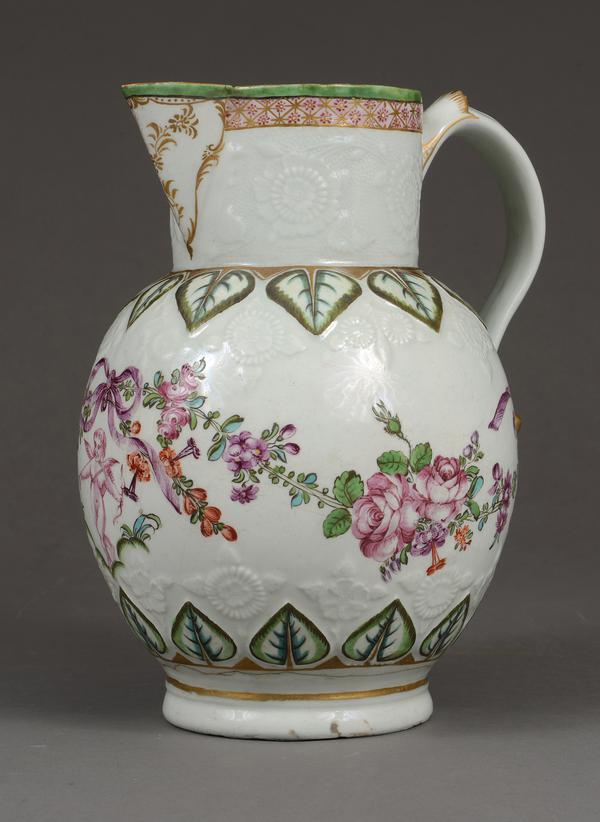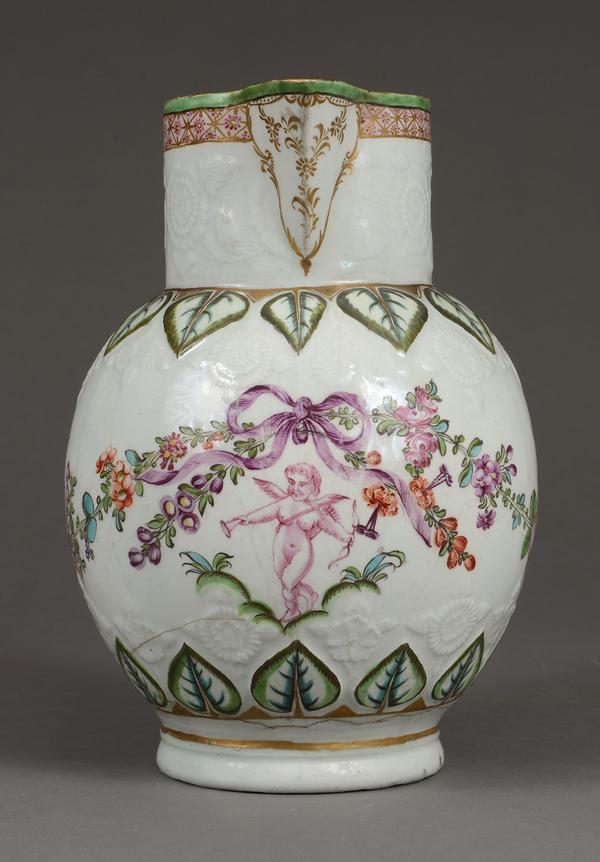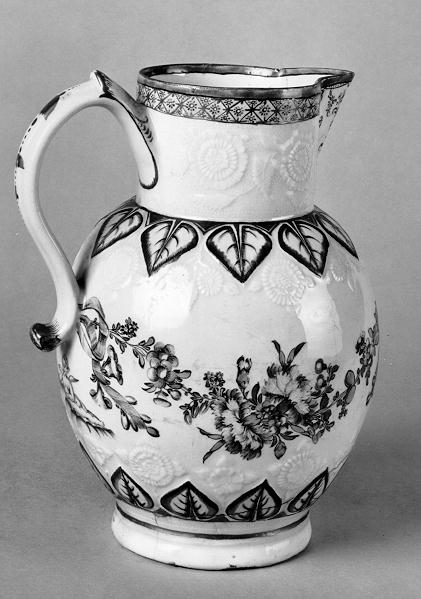Lowestoft porcelain jug
Accession Number NWHCM : 1948.31.30 : D
Description
Lowestoft porcelain jug; large jug, moulded with leaves, flowers etc, handle with thumb rest and basal kick; very finely painted in enamel colours, large festoons of flowers especially roses and carnations, on body of jug, supported under and opposite handle, by bunches of mauve ribbons, under each of which is a cupid in puce enamel, moulded leaves at top and bottom of body picked out in green, pink and gilt decoration round neck, cracked and repaired above base, no mark, label in ... 479 C.C. thickly glazed and three blobs of glaze on base, one on handle
Read MoreLowestoft porcelain jug
The Lowestoft factory, unlike other early English porcelain factories, stayed in business for forty years. They deliberately appealed to a middle class, rather than an aristocratic market, and kept their prices affordable. Many of their wares were relatively simple, not always of the highest quality compared to some other porcelains available at the time.
This jug would have been among their most expensive ranges, as glazing in multiple colours requires each glaze to be fired separately. A deep pink colour predominates. This represents a nod to high fashion, as it was a popular colour of the time, much used by the trend-setting European Meissen and Sèvres porcelain factories.
The floral design is also in a European style. The standard of Lowestoft painters was variable, and it was usual for different types of decoration to be painted by different people. It is particularly obvious on this jug because whoever painted the flowers and ribbons clearly left a space for the cherub to be added afterwards. The cherub painter did a much clumsier job, and has obviously had great difficulty squashing the cherub into the space!



